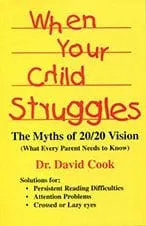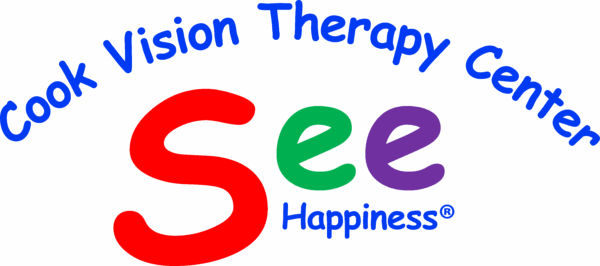Vision Therapy for Autism
What Is Autism Spectrum Disorder? Core Characteristics
Autism Spectrum Disorder (ASD) is a lifelong neurodevelopmental condition that impacts social communication, behavior, and sensory processing. Symptoms typically emerge in early childhood, though diagnosis can occur at any age. Below, we break down the key characteristics of autism and dispel harmful misconceptions.
Core Characteristics of Autism
-
Social Communication Challenges
-
Difficulty interpreting social cues (e.g., facial expressions, tone of voice).
-
Struggles with maintaining conversations or sharing interests.
-
May prefer solitary play or have trouble understanding emotions.
-
-
Repetitive Behaviors & Restricted Interests
-
Repetitive movements (e.g., hand-flapping, rocking) or strict routines.
-
Intense focus on niche topics, objects, or activities.
-
-
Sensory Sensitivities
-
Over- or under-reaction to stimuli like sounds, textures, or lights.
-
Sensory overload may lead to meltdowns or withdrawal.
-
Recognizing Autism: Early Signs, Diagnosis, & Next Steps
Early Signs of Autism in Children
Parents often notice early indicators of ASD by age 2–3, including:
-
No babbling, pointing, or response to name by 12 months.
-
Avoidance of eye contact or physical affection.
-
Repetitive movements (e.g., spinning objects, lining up toys).
-
Extreme distress over routine changes.
How Is Autism Diagnosed?
ASD diagnosis involves a multi-step evaluation by specialists (e.g., developmental pediatricians, psychologists):
-
Developmental Screening: Routine check-ups to identify delays.
-
Comprehensive Assessment:
-
Behavioral observations (e.g., ADOS-2 assessment).
-
Detailed interviews with caregivers about developmental history.
-
-
Diagnostic Tools: Standardized tests like the Autism Diagnostic Observation Schedule (ADOS).
Why Pursue an Autism Diagnosis?
-
Access to Support: Therapies (e.g., speech, occupational), IEPs, and community resources.
-
Educational Accommodations: Tailored learning plans for schools.
-
Clarity & Advocacy: Helps families understand behaviors and plan long-term.
Help Your Child Communicate with the World
For years, Cook Vision Therapy in Cobb County, GA, has supported individuals on the autism spectrum by addressing their unique sensory and visual needs. Autism spectrum disorders (ASD) often create a disconnect between the mind and body, where the mind struggles to interpret the body’s sensory signals. Many individuals with ASD avoid unfamiliar situations to minimize overwhelming stimuli, relying on repetitive actions (like stemming) or familiar topics to cope.
Why Sensory Input Feels Overwhelming
Children and adults on the spectrum often retreat into their internal worlds to escape the chaotic sensory input from their surroundings. The external world can feel invasive, triggering sensitivities such as:
-
Tactile Defensiveness: Oversensitivity to touch, requiring occupational therapy.
-
Auditory Overload: Discomfort from sounds, managed through systematic auditory training.
-
Visual Distortions: Painful perception of light or motion, common in busy Marietta schools or parks.
How Vision Therapy Bridges the Gap
At Cook Vision Therapy in Cobb County, we use a neurodevelopmental approach to strengthen 7 core visual abilities, helping individuals process sensory input more comfortably. Unlike traditional eye care, our therapy:
-
Reduces distorted or painful visual perception.
-
Encourages engagement with the external world (“world without”) instead of retreating inward (“pictures within”).
-
Integrates local environments like Swift-Cantrell Park or Cobb County schools for real-world practice.
What Makes Our Approach Unique?
-
Local Expertise: Tailored strategies for Marietta’s sensory-rich environments (e.g., crowded classrooms, playgrounds).
-
Sensory Integration Tools: Ambient prism lenses soften harsh lighting, while binocular vision training improves eye teaming for better social interactions.
-
Proven Results: Improved visual-motor coordination for tasks like writing or playground activities, fostering confidence in Cobb County community settings.
What Makes Vision Therapy Unique for Autism?
Vision therapy (VT) at Cook Vision Therapy in Cobb County goes beyond traditional eye care. Our neurodevelopmental approach addresses sensory processing gaps common in autism, helping children engage more comfortably with their surroundings.
Key Components of VT for Autism:
- Binocular Vision Training: Improves eye teaming to reduce social gaze avoidance.
- Sensory Integration: Uses tools like ambient prism lenses to soften harsh lighting in busy Marietta environments (e.g., schools, parks).
- Visual-Motor Coordination: Enhances skills for tasks like writing or playground activities at local spots like Swift-Cantrell Park.
- Customized Plans: Every child’s program is tailored to their needs, leveraging Marietta’s community resources for real-world practice.
FAQs
-
What is vision therapy for autism?
Vision therapy for autism is a neurodevelopmental program targeting sensory processing gaps. It enhances visual abilities like eye teaming and coordination using tools like ambient prism lenses, helping individuals engage comfortably with their environment.
-
How does vision therapy help sensory processing in autism?
-
Why is binocular vision training important for autism?
-
Where can my child practice visual-motor skills in Marietta?
-
Will vision therapy reduce sensitivity to lights or sounds?
-
Who benefits from vision therapy at Cook Vision Therapy?
-
How are plans customized for autism at Cook Vision Therapy?
-
What results can I expect from vision therapy?
-
Is autism caused by vaccines?
-
Can adults be diagnosed with autism?
-
What should I do if I suspect my child is autistic?
-
How can schools support autistic students?
Check Out Our Resources
Dr. Cook’s Publications:
- Authored books VISUAL FITNESS and WHEN YOUR CHILD STRUGGLES.
- Published articles in top optometric journals.
- His article “Eyesight, infinity and the human heart” was voted “Best Non-Technical Article” by the Association of Optometric Editors.





